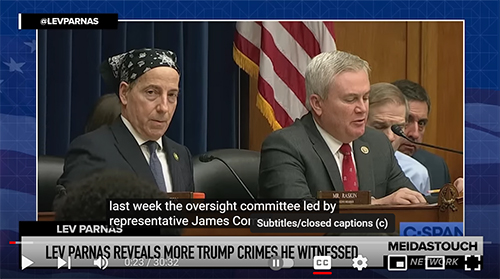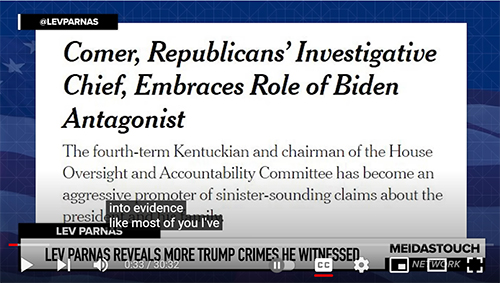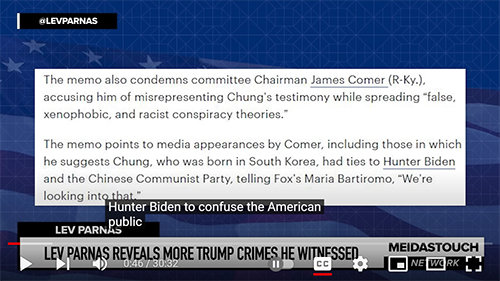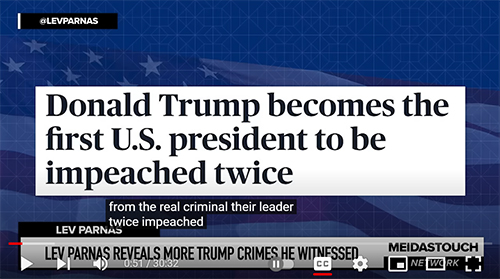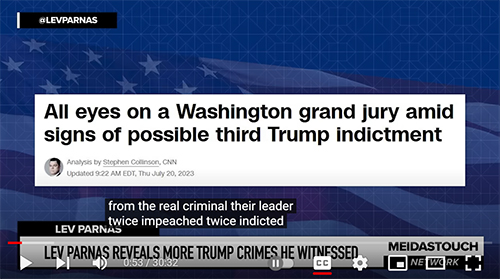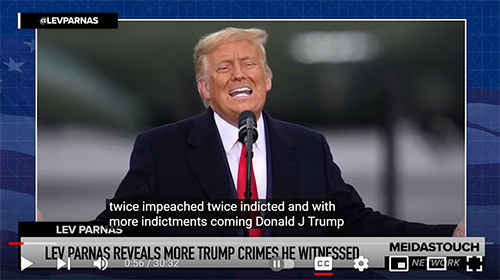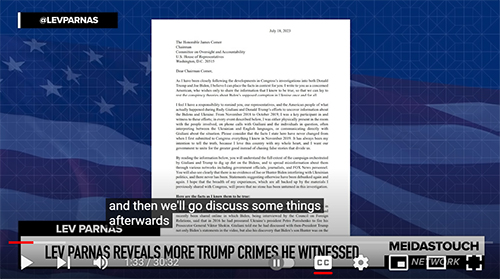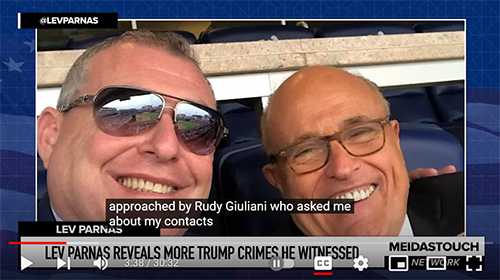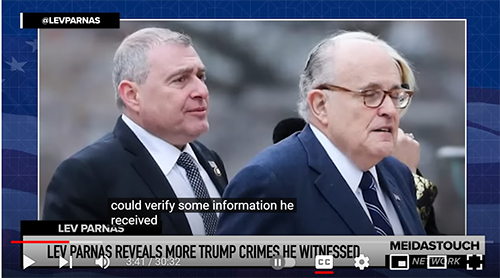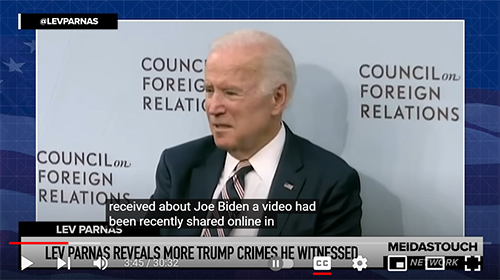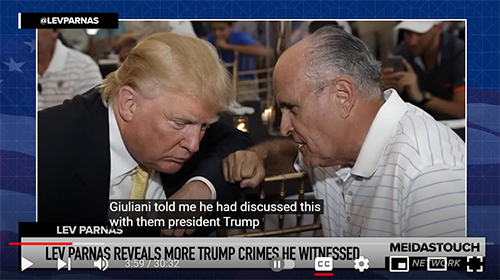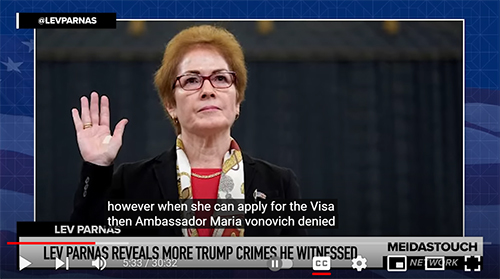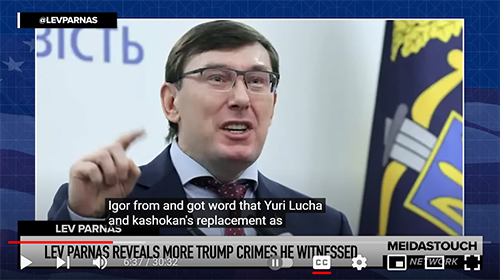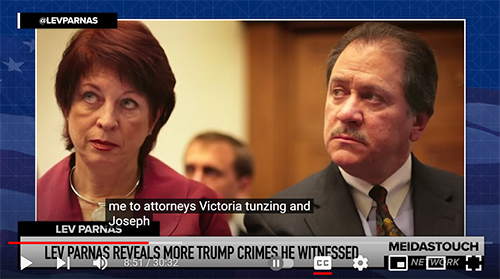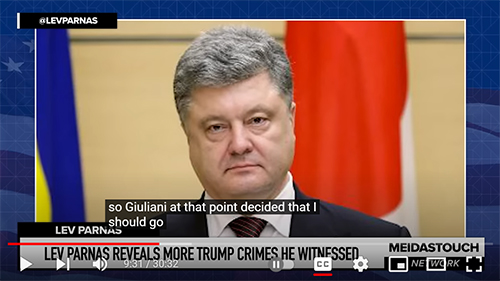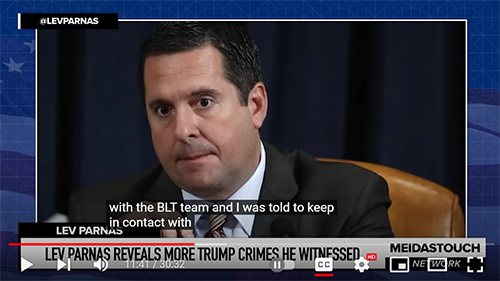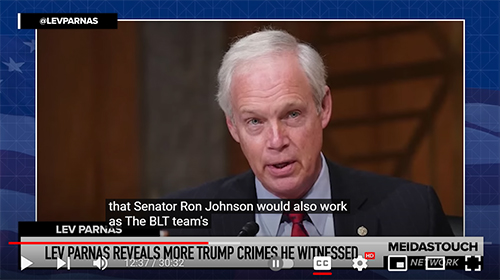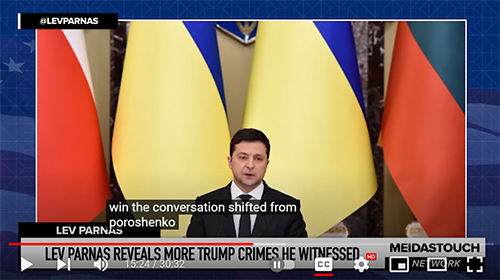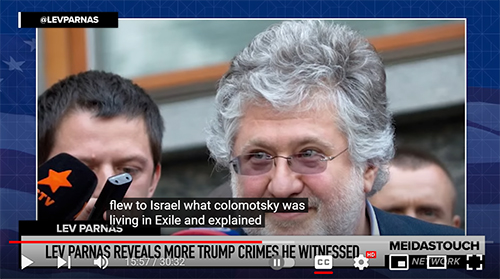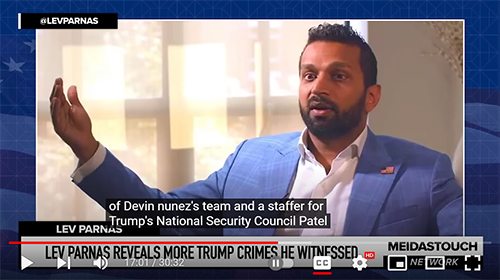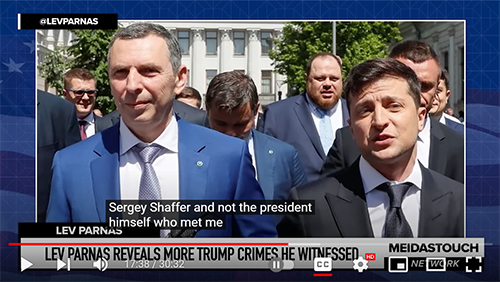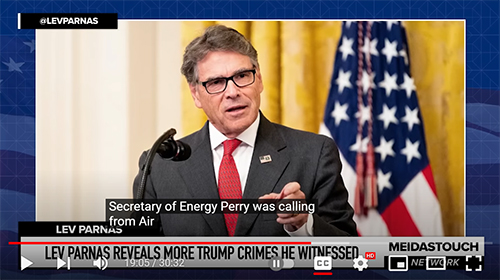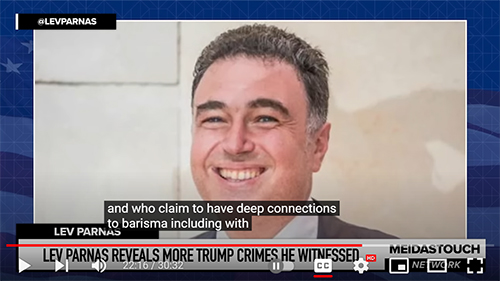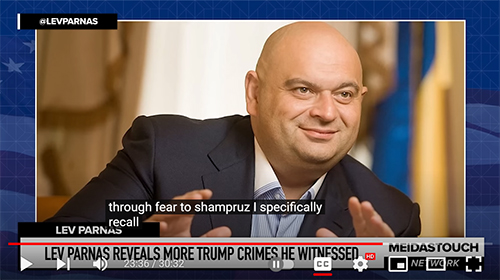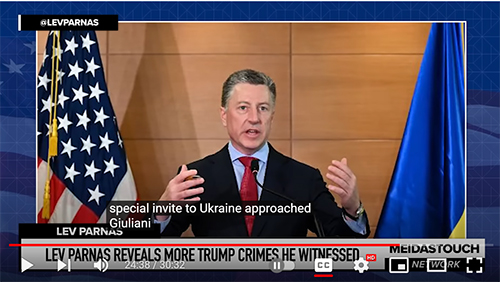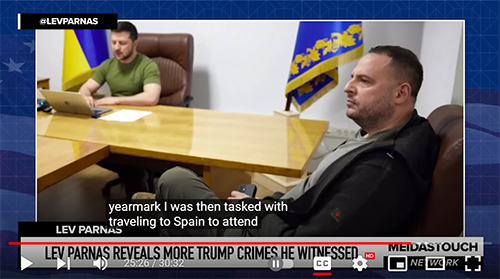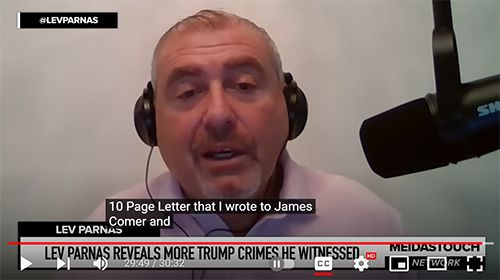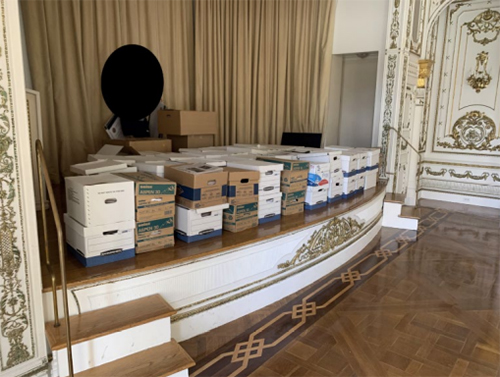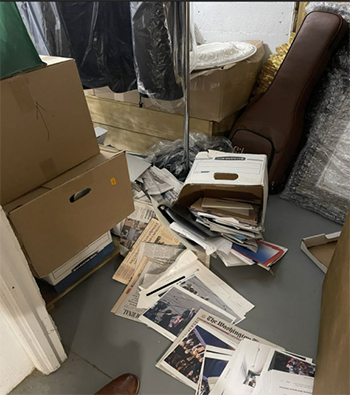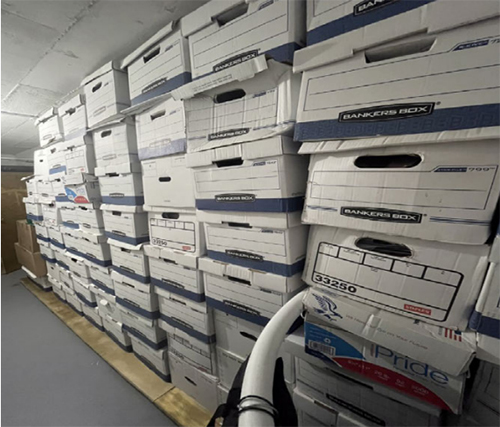Memorandum Opinion [Denying Defendant Chansley's § 2255 motion to vacate, set aside, or correct his guilty plea and corresponding sentence]
USA v. Jacob Anthony Chansley, Case No. 1:21-cr-3 (RCL)
by Royce C. Lamberth, United States District Judge
July 20, 2023
UNITED STATES DISTRICT COURT
FOR THE DISTRICT OF COLUMBIA
UNITED STATES OF AMERICA
v.
JACOB ANTHONY CHANSLEY,
Defendant.
Case No. 1:21-cr-3 (RCL)
MEMORANDUM OPINION
Defendant Jacob Anthony Chansley, who was the face of the riot at the United States Capitol on January 6, 2021, is now the face challenging the prosecutions of the criminal conduct that occurred that day. Citing what he calls "newly discovered" evidence, Mr. Chansley moves to vacate, set aside, or correct his guilty plea and corresponding sentence under 28 U.S.C. § 2255. The government opposes and urges the Court to summarily deny Mr. Chansley's motion.
Upon consideration of Mr. Chansley's motion, the government's opposition, the record therein, and the applicable law, the Court will DENY Mr. Chansley's § 2255 motion.
I. BACKGROUND
A. Mr. Chansley's Involvement in the Events of January 6, 2021 and Indictment
On January 6, 2021, at approximately 1:00 pm, the Senate and House of Representatives assembled in a joint session at the U.S. Capitol building to count electoral votes cast in the 2020 presidential election. Statement of Offense, ECF No. 70, ¶ 3. Then-Vice President Michael R. Pence was present and presiding over the joint session. Id. At approximately 1 :30 pm, the Senate and House adjourned to their respective chambers to resolve an objection to the certification. Id. Vice President Pence adjourned with the Senate and presided over that proceeding. Id. Meanwhile, a large crowd of rioters gathered outside of the building, assembled behind barricades in front of the police line at the West front of the Capitol. Id. ¶¶ 4, 5.
At approximately 1:50 pm, Mr. Chansley scaled a media tower constructed in preparation for the presidential inauguration. Id. ¶ 5. That day, Mr. Chansley was shirtless, wearing a homed and fur-lined hat, and red, white, and blue face paint. Id. He carried a six-foot-long pole with an American flag zip-tied to it and a spearhead affixed to the top, as well as a bullhorn. Id.; United States v. Chansley, 525 F. Supp. 3d 151, 155 (D.D.C. 2021). Approximately ten minutes later, Mr. Chansley and the other rioters breached the barricades and advanced to the Capitol's West front. Statement of Offense ¶¶ 6, 7. At approximately 2:13 pm, rioters forced open the Senate Wing Door, which set off a loud alarm. Id. ¶ 9. One minute later, Mr. Chansley entered the Capitol through the broken door, becoming one of the first thirty rioters to do so. Id. ¶ 10.
At approximately 2:16 pm, two minutes after entering the Capitol, Mr. Chansley and other rioters charged upstairs to the second floor of the Senate side of the Capitol building. Id. ¶ 11. On the second floor, Mr. Chansley encountered several U.S. Capitol police officers, including Officer Keith Robishaw. Chansley, 525 F. Supp. 3d at 155. Officer Robishaw instructed Mr. Chansley and his fellow rioters to leave the building. Statement of Offense ¶ 11. Most of the other rioters complied, but Mr. Chansley refused. Id. Instead, he used his bullhorn to demand that the lawmakers be brought out to face the crowd. Id. At 2:20 pm, the members of the Senate and House, including the Vice President, evacuated their chambers and all certification proceedings were suspended. Id. ¶ 10. During this time, Mr. Chansley ascended another staircase, arriving on the third floor of the Senate side of the Capitol building. Id. ¶ 12.
At approximately 2:52 pm, Mr. Chansley entered the Senate gallery alone. Id. While standing in the gallery, Mr. Chansley shouted obscenities. Id. After that, Mr. Chansley exited the gallery and descended a staircase, where he again met Officer Robishaw. Id. ¶ 13. Officer Robishaw again instructed Mr. Chansley to leave the building, but Mr. Chansley again refused. Id. Instead, Mr. Chansley said that he planned to join rioters who were on the Senate floor. Id.
Mr. Chansley then entered the Senate chamber, followed by Officer Robishaw. Id. Once inside the Senate chamber, he climbed onto the Senate dais and sat in the Vice President's chair, taking pictures of himself as he did so. Id. ¶ 14. Officer Robishaw asked Mr. Chansley to vacate the seat, but Mr. Chansley refused. Id. Instead, he stated, "Mike Pence is a fucking traitor." Id. Mr. Chansley then grabbed paper left on the dais and wrote the following note to the Vice President: "It's Only A Matter of Time. Justice Is Coming!" Id.; Chansley, 525 F. Supp. 3d at 155. Mr. Chansley repeated the same message verbally to a reporter from The New Yorker who was filming the events in the Senate chamber at the time. Chansley, 525 F. Supp. 3d at 155. Officer Robishaw asked that Mr. Chansley vacate the seat and assist him by using his bullhorn to convince his fellow rioters to leave the Senate chamber, but Mr. Chansley refused. Statement of Offense ¶ 15. Instead, Mr. Chansley used his bullhorn to lead his fellow rioters in the following "prayer": "Thank you for allowing the United States of America to be reborn. Thank you for allowing us to get rid of the communists, the globalists, and the traitors within our government." Id.; Chansley, 525 F. Supp. 3d at 155. At that time, there were approximately 20 rioters in the Senate Chamber. Sent'g Hr'g Tr., ECF No. 111, at 7:7-12. Officer Robishaw was the only law enforcement officer present. Statement of Offense ¶ 14. At approximately 3 :09 pm, additional law enforcement officers arrived in the Senate chamber. Id. ¶ 16. The officers then cleared Mr. Chansley and the other rioters from the chamber. Id.
Several media outlets interviewed Mr. Chansley in the hours and days after he left the Capitol. Id. ¶ 18. In an interview on January 7, 2021, Mr. Chansley stated: "The fact that we had a bunch of our traitors in office hunker down, put on their gas masks and retreat into their underground bunker, I consider that a win." Id.; Chansley, 525 F. Supp. 3d at 156.
On January 8, 2021-just two days after the riot-the government filed a sealed criminal complaint against Mr. Chansley, alleging that his actions on January 6 violated various federal laws. See ECF No. 1. Three days later, on January 11, 2021, a grand jury returned an indictment against Mr. Chansley, making him the first Capitol rioter to be indicted in connection with the events of January 6. Indictment, ECF No. 3; Sent'g Hr'g Tr. at 3:22-24. The indictment charged him with six counts: civil disorder in violation of 18 U.S.C. § 23 l(a)(3) (Count One); obstruction of an official proceeding in violation of 18 U.S.C. § 1512(c)(2) (Count Two); entering and remaining in a restricted building in violation of 18 U.S.C. § 1752(a)(l) (Count Three); disorderly and disruptive conduct in a restricted building in violation of18 U.S.C. § 1752(a)(2) (Count Four); violent entry and disorderly conduct in a Capitol building in violation of 40 U.S.C. § 5104(e)(2)(A) (Count Five); and parading, demonstrating, or picketing in a Capitol building in violation of 40 U.S.C. § 5104(e)(2)(G) (Count Six). See Indictment.
On the same day as his indictment, Mr. Chansley was arrested and appeared before U.S. Magistrate Judge Deborah M. Fine in the District of Arizona. Chansley, 525 F. Supp. 3d at 156. The government moved for, and Magistrate Judge Fine ordered, Mr. Chansley' s pre-trial detention. Id. at 156-57; United States v. Chansley, 2:21-mj-5000 (DMF), ECF Nos. 5, 10 (D. Ariz. Jan. 19, 2021). Magistrate Judge Fine then ordered Mr. Chansley to be committed to this District. Chansley, 2:21-mj-5000 (DMF), ECF No. 11 (D. Ariz. Jan. 19, 2021). Mr. Chansley was arraigned by the undersigned in late January 2021. Minute Entry (01/29/2021). He was then represented by Mr. Albert Watkins ("plea counsel"). Id.
B. Video Evidence and Discovery Process
Mr. Chansley, through plea counsel, moved in this Court for pre-trial release and the Court held a hearing on the motion on March 5, 2021. Minute Entry (03/05/2021); ECF No. 12. At the hearing, plea counsel made several representations regarding the video evidence in this case: that "there's miles and miles and miles of footage of my client from January 6th[,]" ECF No. 28, at 7:5--6; that he "provided the Court with the video footage that we were able to gamer through an independent investigative undertaking" in conjunction with a "former FBI special agent[,]" id. at 7:13-15; and "[t]here's a lot of footage of my client interacting peacefully, chatting with and supporting law enforcement who were similarly positioned in [the Senate] part of the Capitol[,]" id. at 10:2-4. Considering this evidence, in conjunction with the other evidence of Mr. Chansley's actions that day, the Court denied Mr. Chansley's motion. Chansley, 525 F. Supp. 3d at 172.
The case then proceeded. As part of the discovery process, the government filed in March and April 2021 motions for a protective order and for an order to disclose certain sealed and protected materials with defense counsel. Gov't Opp'n, ECF No. 123, at 2; ECF Nos. 21 & 36. The Court granted both motions within days of their filing. ECF Nos. 24 & 37.
On May 20, 2021, the government provided its first notice of discovery with the Court.1 ECF No. 38. That notice contained a letter to plea counsel, dated the same date, recounting the various discovery productions made to counsel between January and mid-May 2021. ECF No. 38- 1. Of relevance here, the letter listed the following productions:
(1) video footage from the Senate floor (produced April 24, 2021); (2) video footage from a subpoena to The New Yorker (produced April 24, 2021); (3) nine videos from relevant Metropolitan Police Department ("MPD") body worn cameras ([produced] May 17, 2021); (4) five videos of Capitol Closed Circuit Video ("CCV") footage ([produced] May 18, 2021); and (5) two grand jury transcripts with ten accompanying grand jury exhibits ([produced] May 19, 2021).
Gov't Opp'n at 2 (referencing ECF No. 38-1 at 2). On September 17, 2021, the government provided two updates on the status of discovery. ECF Nos. 75 & 76. In the first update, describing the status of discovery as of August 23, 2021, the government expressly acknowledged the following: "Defense counsel in Capitol Breach cases have made requests including any and all information that captures an individual defendant's conduct or statements; shows people "peacefully walking around the Capitol"; or suggests that a member (or members) of law enforcement allowed people to enter or remain in the Capitol or on restricted grounds, acted friendly or sympathetic to the rioters, or otherwise failed to do their jobs." ECF No. 75 at 2 (emphasis added). In response, the government noted "there may be additional types of information a defendant may consider material or exculpatory" but that "since the government does not know the defense theory in any particular case, it is impossible to [sic] for the government to determine what other types of information a defendant may believe to be material." Id. The government added: "To the extent the type of information described above may exist, it may be interspersed among the voluminous sets of data." Id.
The government informed plea counsel of its proposed solution to this discovery conundrum. The government described how it was working with the Federal Public Defender ("FPD") for the District of Columbia to upload discovery materials to electronic databases. Id. at 3. Specifically, the government noted that it had already begun populating one database, named Relativity, with documentary discovery. Id. at 5. Further, due to processing and usability limitations associated with Relativity, the government explained that it was in the final stages of contracting to facilitate, in close consultation with FPD, production of video discovery via a different database, named Evidence.com. Id. at 7.
In the second discovery update of September 17, 2021, describing the status of discovery as of September 14, 2021, the government confirmed that the Evidence.com contracting process was complete and that the database was operational. ECF No. 76 at 2-3. The government further reported that it was in the process of populating Evidence.com with approximately 2,300 hours of footage captured by law enforcement body-worn cameras. Id. at 3. Specifically, the government stated that it "expect[ed] to produce [such footage] no later than the end of next week (Friday, September 24, 2021)." Id. (emphasis added).
On October 25, 2021, the government provided its fourth update regarding the status of discovery, current as of October 21, 2021. ECF No. 78. The update reported, in relevant part, that the following evidence had been made available on Evidence.com: (1) 16,925 closed circuit television ("CCTV") video files, containing approximately 4,800 hours of footage, recorded by 515 cameras located throughout the Capitol; (2) 15 maps indicating the location of cameras in the Capitol Visitor Center and interior of the Capitol; and (3) 1,676 files from body-worn cameras belonging to Metropolitan Police Department ("MPD") officers, containing approximately 1,600 hours of footage. Id. at 2. The government later represented that these materials were made available to defense counsel through Evidence.com on October 22, 2021. Def.'s Mot., ECF No. 117, at 12; Gov't Opp'n at 16. Separately, the government provided defense counsel with information about the location of the files within the database, their naming conventions, and the videos' timestamps. Gov't Opp'n at 17. Additionally, the government noted in the October 25, 2021 update that the FPD, who was coordinating access to Evidence.com on behalf of defendants charged with crimes related to January 6, 2021, had sent emails to all defense counsel with information on how to request a license to access the database. ECF No. 78 at 2. The FPD had also developed and shared a guide for defense attorneys on how to use Evidence.com and share discovery with their clients. Id. Mr. Chansley's plea counsel received the FPD's notification on October 15, 2021. Def.'s Reply at 6-7.
On November 5, 2021, the government provided its fifth update regarding the status of discovery, current as of that date. ECF No. 79. The government noted that, since the last status update, the government had populated Evidence.com with additional video footage. Id. at 2. In relevant part, the government stated that it shared an additional 4,204 CCTV video files recorded by 123 cameras, some of which were located in the Capitol's interior. Id.
C. Mr. Chansley's Guilty Plea and Sentencing
On September 3, 2021, Mr. Chansley pleaded guilty to Count Two, obstruction of an official proceeding in violation of 18 U.S.C. § 1512(c)(2), in exchange for the government's dismissal of the five other charges then-pending against him. See Minute Entry (09/03/2021). Mr. Chansley, in consultation with plea counsel, executed and signed a written plea agreement with the government. Plea Agreement, ECF No. 69. In the plea agreement, Mr. Chansley agreed that he was pleading guilty to Count Two because he was "in fact guilty." Id. at 10. In so doing, Mr. Chansley averred that the Statement of the Offense "fairly and accurately describe[d] [his] actions and involvement" in the offense. Id. ,i II. Mr. Chansley also agreed that he had "read every page of [the] Agreement," "discussed it with [his] attorney," and "fully underst[ood the] Agreement and agree[ d] to it without reservation." Id. at 10. In the plea agreement, Mr. Chansley attested that he was "satisfied with the legal services provided by [his] attorney in connection with [the] Agreement and the matters related to it." Id. at 10. Mr. Chansley reiterated his satisfaction with plea counsel to this Court during the plea hearing. See Plea Hr'g Tr., ECF No. 110, at 7:9-15; 9:22-25.
The plea agreement contained-and Mr. Chansley assented to-several express waivers. Specifically, Mr. Chansley agreed to waive his right to directly appeal his sentence, except for his rights to appeal a sentence imposed beyond the statutory maximum or U.S. Sentencing Guidelines range, and to appeal based on ineffective assistance of counsel. Plea Agreement ¶ IX(D). Furthermore, Mr. Chansley agreed to waive "any right to challenge the conviction entered or sentence imposed" through a motion brought under 28 U.S.C. § 2255, unless "such a motion is based on newly discovered evidence or on a claim that [Mr. Chansley] received ineffective assistance of counsel." Id. ¶ IX(E).
Finally, Mr. Chansley agreed to several provisions regarding sentencing. As relevant here, Mr. Chansley agreed that his sentence would be "determined by the Court, pursuant to the factors sector forth in 18 U.S.C. § 3553(a), including a consideration of the Sentencing Guidelines[,]" id. ¶ IV, and that he understood "that the sentence to be imposed is a matter solely within the discretion of the Court." Id. ¶ VII. He further agreed to the government's estimated offense level calculations under the Guidelines. Id. ¶ IV(C). Specifically, he agreed that the estimated offense level for Count Two was 25, representing the base offense level (14) plus enhancements for property damage (8) and substantial interference (3). Id. ¶ IV(A). The estimated Count Two offense level of 25, minus reductions for acceptance of responsibility (2) and assistance to authorities (1 ), rendered an estimated total offense level of 22. Id. Accordingly, Mr. Chansley agreed that, considering an estimated total offense level of 22 and criminal history category of I, id. ¶ IV(B), the estimated Sentencing Guidelines range in his case was 41 to 51 months' incarceration. Id. ¶ IV(C). He further concurred with the government's estimated monetary penalties, including a fine range of $15,000 to $150,000, id., a special assessment of $100 for his felony conviction, id. ¶¶ I, IV(C), and restitution in the amount of $2,000, id. ¶ XI. Finally, he agreed that his conviction carried a maximum supervised-release term of three years. Id. ¶ I.
On November 17, 2021, after the government's five updates regarding the status of discovery, this Court sentenced Mr. Chansley. See Minute Entry (11/17/2021). In calculating the applicable sentence, the Court agreed with the Guidelines calculations as outlined by the parties in the plea agreement and calculated a total offense level of 22. Sent'g Hr'g Tr. at 2:25-3:7. When it came time for plea counsel's presentation, he appreciated the seriousness of the events of January 6, 2021, id. at 14 :9-11, and acknowledged the overwhelming evidence in this case: "I've provided you with videos. I've provided the government with videos. The government's given me videos. The government's given you videos that I've given her. This isn't a drive-in movie theater. You don't need to see more video." Id. at 16:18-21. Plea counsel went on to focus on Mr. Chansley's acceptance of responsibility, which he previewed by saying, "Jake presents with having apologized without equivocation. No buts, no blames, I did it, I want to be accountable, I want to be held accountable." Id. at 27:15-17.
Mr. Chansley then spoke to the Court, accepting responsibility for his actions and expressing remorse. See, e.g., id. at 32:23-33:4 ("So I had to come to terms with the fact that I was in solitary confinement because of me, because of my decision. I broke the law, and if I believe in freedom, if I believe in law and order, if I believe in responsibility and accountability, then that means that I should do what Gandhi would do and take responsibility even and especially when it incriminates me. No ifs, ands, or buts about it. That's what men of honor do."); id. at 34:25-35:5 ("I am truly, truly repentant for my actions, because repentance is not just saying you're sorry. Repentance is apologizing and then moving in the exact opposite direction of the sin that you committed. And that's what I've been trying to do ever since I realized the magnitude of my error and the magnitude of my mistake."). Mr. Chansley unequivocally stated: "[I]n retrospect, I would do everything differently on January 6. In all honesty, I would do everything differently." Id. at 35:16-18. The Court heavily credited Mr. Chansley's apparent remorse and acceptance of responsibility. See id. at 48:21-22 ("[Y]ou have evolved in your thinking clearly and reversed your thinking in many ways"); id. at 49:3-5 ("You've certainly done everything you could today to convince the Court that you're anew person, and I think you're on the right track"); id. at 55:23- 56:2 ("[Y]ou were smart. It may not feel it today, but let me guarantee you, you were smart. You did the right thing. And you owned up to it today in a fashion that is unusual for me to see, the candor with which you approached me today. I appreciate it.").
The Court then sentenced Mr. Chansley to 41 months' incarceration as to Count Two, the bottom of the Guidelines range, with credit for time served. See J., ECF No. 92, at 2. In explaining the sentence, the Court stated: "[W]hat you did here was horrific, as you now concede, and obstructing the functioning of the government as you did is the type of conduct that is so serious that I cannot justify a downward departure [ from the Sentencing Guidelines range of 41 to 51 months]." Sent'g Hr'g Tr. at 48:22-25. Even considering the seriousness of the offense, the Court credited Mr. Chansley's remorse and acceptance of responsibility to sentence Mr. Chansley consistent with the bottom of the applicable Guidelines range. See id. 49:1-3 ("I do think that the minimum under the guidelines is something you've earned because you've done everything right from the time that you started in the other direction."). The Court also sentenced Mr. Chansley to three years of supervised release, a special assessment of$ 100, and $2,000 in restitution. 2 See J. at 3, 6. Approximately two weeks after sentencing, Mr. Chansley's current counsel, Mr. William Shipley ("post-conviction counsel") appeared to represent Mr. Chansley, ECF No. 101, and the Court granted plea counsel's motion to withdraw. Minute Entry (11/29/2021).
In late March 2023, Mr. Chansley was released from custody after having completed his term of incarceration, accounting for his time previously served and good-time credit. 3
D. Post-Sentencing Events Related to Mr. Chansley's Case
On March 6, 2023, then-television host Tucker Carlson aired footage from January 6, 2021 on his eponymous show.4 The host claimed that certain videos recorded on January 6 had been withheld from the public and that such videos demonstrated that the Capitol rioters were merely "sightseers." That segment prominently featured Mr. Chansley. All of the footage of Mr. Chansley aired on the program was recorded on CCTV cameras positioned inside the Capitol building between the times of 2:49 pm and 2:59 pm, except for one CCTV clip recorded at 2: 13 pm. Gov't Opp'n at 9-10. Mr. Chansley arrived at the Capitol more than one hour prior to this period and stayed for some time afterward. Statement of Offense ¶¶ 4, 5, 16. The footage, in relevant part, showed Mr. Chansley traversing hallways in the Senate side of the Capitol, sometimes followed by and sometimes following law enforcement officers who did not visibly impede Mr. Chansley' s movements. The footage did not include any audio recordings. The host claimed that the videos undermined the legitimacy of the government's prosecution against Mr. Chansley. Two days later, plea counsel stated on the same television program that he had not seen the videos at any point during his representation of Mr. Chansley.5
On March 9, 2023, Dominic Pezzola, who at the time was on trial for his own felonious conduct on January 6, 2021, moved to dismiss his indictment based on the government's failure to disclose the footage aired on March 6, which Pezzola claimed was "exculpatory" for himself and Mr. Chansley.6 See United States v. Pezzola, 21-cr-175-6 (TJK), ECF No. 679. On March 12, 2023, the government opposed, claiming that the footage of Pezzola and Mr. Chansley aired during the broadcast was neither withheld from the defense nor exculpatory. Pezzola, ECF No. 689, at 2. Specifically, the government asserted that all of the footage aired on the broadcast, save for one 10-second clip, was produced to defense counsel via the Evidence.com database by September 24, 2021, and that the remaining clip was produced on January 23, 2023. Id. at 3. Based on these representations, along with a consideration of the applicable law, Judge Timothy J. Kelly denied the motion because "Pezzola ha[ d] not shown that the video footage tends to show his innocence" "[n]or ha[d] the evidence been suppressed." Mem. Order, Pezzola, ECF No. 755, at 3.
On March 17, 2023, Mr. Chansley's post-conviction counsel contacted the government via letter asking specific questions about when the CCTV videos appearing in the March 6, 2023 segment were produced. Def.'s Mot. at 11; Gov't Opp'n at 9. The government responded on March 27, 2023, explaining that all of the clips appearing in the broadcast, except for the 10-second clip, were produced on October 22, 2021, and that the remaining clip was produced on February 21, 2023. Def.'s Mot. at 12; Gov't Opp'n at 9-10.
The Court summarizes the videos aired on March 6, 2023 as the following:
Approximate Time on January 6, 2021 / U.S. Capitol CCTV Camera7 / Time Stamp in Television Segment / Government's Representation of Approximate Date Disclosed to Defense via Evidence.com
2:13 pm / Camera A / 2:48 / May 2021 or October 22, 2021 8
2:49 pm / CameraE / 2:06 / October 22, 2021
2:51 pm / CameraE / 3:09 / October 22, 2021
2:56pm / CameraF / 4:31 / October 22, 2021
2:56 pm / Camera F / 5:14 / October 22, 2021
2:57 pm / CameraD / 3:35 / October 22, 2021
2:57pm / CameraD / 5:21 / October 22, 2021
2:57pm / CameraE / 4:12 / October 22, 2021
2:57pm / CameraE / 5:00 / October 22, 2021
2:57pm / CameraH / 3:40 / October 22, 2021
2:57pm / CameraH / 5:25 / October 22, 2021
2:59pm / CameraB / 3:28 / October 22, 2021
2:59pm / Camerae / 4:01 / October 22, 2021
2:59pm / CameraG / 3:48 / February 21, 2023 9
See Def's Mot. at 12; Gov't Opp'n at 9-10.
In April 2023, Mr. Chansley, through counsel, moved to vacate, set aside, or correct his sentence under 28 U.S.C. § 2255, claiming newly discovered evidence and ineffective assistance of his plea counsel. Def. 's Mot. at 2--4. Specifically, he claims that conduct by both the government and his plea counsel with respect to the videos aired during the March 6 broadcast rendered both his plea agreement and resulting sentence unconstitutional. Id. First, Mr. Chansley asserts that the videos were both exculpatory and withheld from the defense in violation of Brady v. Maryland, 373 U.S. 83 (1963), and that, had the videos been disclosed to the defense prior to sentencing, plea counsel would have used the videos' contents to argue for, and that this Court would have imposed, a lower sentence than the one Mr. Chansley received. Id. at 16-1 7. Second, he claims that plea counsel was unconstitutionally ineffective because counsel did not seek production of the videos from the government and because counsel recommended that Mr. Chansley accept the plea agreement containing a sentencing-enhancement stipulation and waiving appeal rights without this evidence. Id. at 17-21. Relatedly, he insists that further discovery into the video-disclosure issue is required, particularly due to government's conflicting statements regarding the dates of production as stated in filings in this and the Pezzola case. Id. at 21-22.
In June 2023, the government opposed, insisting that Mr. Chansley has not met his burden to establish that he is entitled to collateral relief because he either waived his claims or they are meritless. Gov't Opp'n at 1. Mr. Chansley submitted a brief reply. Def.'s Reply, ECF No. 126. Mr. Chansley's motion is now ripe for review.
II. LEGAL STANDARDS
A. 28 U.S.C. § 2255
A prisoner may move to vacate, set aside, or correct his sentence if (1) the sentence was imposed "in violation of the Constitution or laws of the United States"; (2) the court lacked jurisdiction to impose the sentence; (3) the sentence "was in excess of the maximum authorized by law"; or (4) the sentence is "otherwise subject to collateral attack." 28 U.S.C. § 2255(a). The petitioner bears the burden to prove his right to relief by a preponderance of the evidence. United States v. Baugham, 941 F. Supp. 2d 109, 112 (D.D.C. 2012). A court need not hold an evidentiary hearing when "the motion and the files and records of the case conclusively show the prisoner is entitled to no relief." 28 U.S.C. § 2255(b).
B. Government's Discovery Obligations
The government has a constitutional obligation, as recognized in Brady and its progeny, to disclose "evidence in its possession that is favorable to the accused and material either to a defendant's guilt or punishment." United States v. Trie, 21 F. Supp. 2d 7, 23 (D.D.C. 1998). Favorable evidence "tends to help the defense by either bolstering the defense case or impeaching potential prosecution witnesses." United States v. Sa/avian, 233 F.R.D. 12, 16 (D.D.C. 2005); see also Brady, 373 U.S. at 87; Giglio v. United States, 405 U.S. 150, 153-55 (1972). To prevail on a Brady claim, the defendant must show prejudice; in other words, '" a reasonable probability that, had the evidence been disclosed to the defense, the result of the proceeding would have been different."' United States v. Sitzmann, 893 F.3d 811, 826 (D.C. Cir. 2018) (quoting United States v. Bagley, 473 U.S. 667, 682 (1985)). "A court should evaluate prejudice under Brady based on the suppressed evidence as a whole rather than an 'item by item' basis." United States v. Martin, No. 98-cr-329 (RCL), 2021 WL 4989983, at *4 (D.D.C. Oct. 27, 2021) (quoting Kyles v. Whitley, 514 U.S. 419,420 (1995)). Importantly, "[f]or an item to be Brady, it must be something that is being 'suppress[ed] by the prosecution."' United States v. Blackley, 986 F. Supp. 600,603 (D.D.C. 1997) (quoting Brady, 373 U.S. at 87).
C. Ineffective Assistance of Counsel
To prevail on a claim of ineffective assistance of counsel, a petitioner "must prove both incompetence and prejudice." Kimme/man v. Morrison, 477 U.S. 365, 381 (1986). Specifically, the petitioner must demonstrate that (1) "counsel's representation fell below an objective standard of reasonableness ... under prevailing professional norms" and (2) "there is a reasonable probability that, but for counsel's unprofessional errors, the result of the proceeding would have been different." Strickland v. Washington, 466 U.S. 668, 687-88, 694 (1984). That sets a high bar, as a court's evaluation of counsel's actions "must be highly deferential," and is assessed under the circumstances present at the time of representation without the benefit of hindsight. Id. at 689. Furthermore, a "reasonable probability" under Strickland's second prong is one that is "sufficient to undermine confidence in the outcome." Id. at 694. To establish prejudice, the petitioner must show there is "a substantial, not just conceivable, likelihood of a different result." Cullen v. Pinholster, 563 U.S. 170, 189 (2011) (internal quotations and modifications omitted). An ineffective assistance of counsel claim is defeated if the defendant fails to demonstrate either prong. Strickland, 466 U.S. at 700.
III. DISCUSSION
Mr. Chansley' s motion concocts a Brady claim, and a derivative ineffective assistance of counsel claim, based on videos aired devoid of context and supposedly inconsistent disclosure dates provided by government counsel in two separate cases. These videos are decidedly not exculpatory, especially when viewed in context with the "miles and miles and miles of footage" recorded of Mr. Chansley on January 6, 2021. ECF No. 28, at 7:5--6. Such footage, conveniently omitted by the March 6, 2023 program, shows nearly all of Mr. Chansley's actions that day, including: carrying a six-foot-long pole armed with a spearhead, unlawfully entering the Capitol through a broken door, disobeying orders from law enforcement on more than a half-dozen occasions, screaming obscenities, entering the Senate chamber, climbing onto the Senate dais, sitting in the Vice President's chair, and leaving a threatening message for the Vice President. Moreover, the precise date that the particular videos appearing in the program were disclosed is immaterial because Mr. Chansley and plea counsel were aware of the videos' content -- Mr. Chansley interacting with law enforcement officers who did not visibly impede his progress -- by May 20, 2021. In other words, Mr. Chansley possessed the facts in the videos well in advance of his plea agreement, yet still determined, quite sensibly, to accept responsibility for his role in the criminal events of January 6, 2021. What is more, the record shows that the government disclosed virtually all of the videos at issue weeks before Mr. Chansley' s sentencing. These facts and the underlying law conclusively demonstrate that Mr. Chansley is not entitled to relief under § 2255.
A. Mr. Chansley's Claims Are Timely, Not Waived, and Not Moot
As a threshold matter, Mr. Chansley claims are not time-barred. Under the Anti-Terrorism and Effective Death Penalty Act, a defendant must bring any § 2255 claims within one year of "the date on which the facts supporting the claim or claims presented could have been discovered through the exercise of due diligence." 28 U.S.C. § 2255(£)(4). Mr. Chansley's claims rely on facts, namely alleged discrepancies in the dates and circumstances surrounding discovery in his case, discovered in March 2023. Because Mr. Chansley filed his motion within one year after these events, his motion is timely.
Nevertheless, the government insists that Mr. Chansley's Brady claim is procedurally barred because he waived this claim through his plea agreement. 10 Gov't Opp'n at 14-16. Mr. Chansley agreed to waive a collateral challenge to his conviction unless the motion was based on "newly discovered evidence." Mr. Chansley responds that his claim is not waived because neither he nor his plea counsel were aware of the specific evidence (the videos broadcast on March 6, 2023), even if they may have been aware of the facts contained in the evidence. Def.'s Reply at 2-3. The Court is mindful of the government's view that the "concern with finality served by the limitation on collateral attack has special force with respect to convictions based on guilty pleas." Gov't Opp'n at 15 (quoting Bousley v. United States, 523 U.S. 614, 621 (1998)). At the same time, this Court "will not bar the door" to Mr. Chansley's collateral attack when "his waiver only arguably or ambiguously forecloses his claims." United States v. Hunt, 843 F.3d 1022, 1027 (D.C. Cir. 2016). Because it is not clear that Mr. Chansley's plea agreement unambiguously waived his right to bring his claim, and because the government admits that one 10-second video appearing in the March 6, 2023 was not disclosed prior to Mr. Chansley's plea and sentencing, the Court concludes that Mr. Chansley did not waive his Brady claim.
Additionally, although not raised by either party, the Court notes that Mr. Chansley's claims are not moot even though he ended his period of incarceration prior to filing his motion. In addition to a prison term, the Court sentenced Mr. Chansley to supervised release, a special assessment, and restitution. He may still pursue relief from the remaining aspects of his sentence under§ 2255. See United States v. Mejia, No. 10-cr-256-03 (RCL), _ F. Supp._, 2023 WL 2297465, at *2 (D.D.C. Feb. 23, 2023) (citing United States v. Mejia, No. 20-3086, 2022 WL 4280686, at *1 (D.C. Cir. Sept. 14, 2022)).
The Court will therefore proceed to the merits of Mr. Chansley' s claims.

